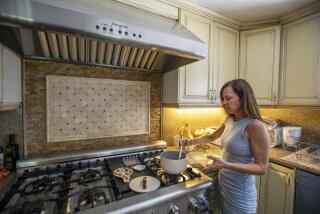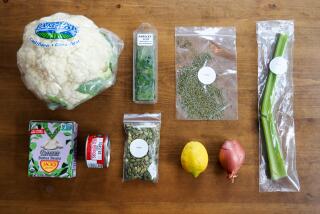How Safe Are You?
Itâs summer, the burgers are on the grill and because youâre savvy about food safety, you know that any bacteria they may harbor are destroyed not when the meat goes from red to brown but when the juices run clear instead of pink, right?
Wrong. For one thing, juices never run clear; they run sort of yellowish. More important, changes in color, whether of the meat or the juices, never indicate doneness.
The only way you can know for sure that the E. coli and other dangerous bacteria that often lurk in ground beef have been destroyed is by checking to make sure the temperature has reached 160 degrees. To get an accurate reading, use a sensitive digital thermometer, inserted only a half-inch deep.
Assuming that you can always go by color is just one of many food-safety misconceptions that consumers have. Of course, the more faulty food-safety practices you go by, the more likely you are to end up with food-borne illness. Take a look at the common food-safety myths below to help ensure that your meals are prepared--and stored--as safely as possible.
* Youâre supposed to refrigerate all cooked foods within two hours of initially serving them. But since heating foods to a very high temperature kills all the bacteria present, itâs OK to eat the leftover lasagna that had been sitting out for several hours as long as itâs steaming hot when it comes out of the reheating oven or microwave.
No way. Cooking kills bacteria, but it doesnât kill the toxins that some bacteria produce. And the toxins can make you just as sick as the germs themselves.
For instance, the bacterium staphylococcus, which thrives in the nose and throat and can easily make its way into food when people donât wash their hands after blowing their noses or sneezing, produces a toxin that causes stomach pain, diarrhea, nausea, fever and chills. And heat doesnât weaken the toxinâs power. Even nonanimal foods such as cooked pasta and rice can contain enough toxins to do damage if left out for too long. In other words, if youâve let cooked food sit outside the fridge for more than two hours, throw it away.
* You canât eat shrimp that hasnât been deveined.
If you were to eat the shrimp raw, the thin black âveinâ that runs through it could cause harm. Thatâs the shrimpâs intestine, which, like any intestine, has a lot of bacteria. But cooking the shrimp kills the germs. So itâs all right to eat cooked shrimp, âveinsâ and all.
* Youâve made a deep-dish casserole for an impromptu potluck dinner and refrigerated it as soon as the meal was over, so youâre definitely safe from food-borne illness.
Definitely not. More than half the people responding to a Cornell University survey some years ago thought it was safe to refrigerate a deep container. But putting a deep casserole dish or pot into the fridge is risky business.
Even in the refrigerator, food in the center of a deep container may not cool fast enough to stop bacteria from multiplying. Divide the contents into shallow containers before refrigerating so they will cool down as quickly as possible and limit the growth of bacteria. (Remember this advice at Thanksgiving, when you may be feeling too stuffed and sluggish to pull apart the bird before shoving it, whole, into the fridge.)
* Foods should be cooled to room temperature before being placed in the refrigerator.
This advice may be handed down from the days of ice boxes, says Bessie Berry, manager of the Department of Agricultureâs Meat and Poultry Hotline. Before refrigerators, when people had to pay for ice, and when the ice man might not have come around too frequently, it was important to preserve ice blocks for as long as possible. But todayâs refrigerators, she explains, are designed to cool foods efficiently without overworking the motor. Get cooked foods into the refrigerator as soon as possible.
* Youâre making fried chicken--your familyâs summer favorite--but the area near the bone wonât turn from dark red to white, so you know itâs not ready.
Not necessarily. If youâve got a young chicken (or parts from a young chicken), its bones are still porous, so the heating process can draw red pigment through them from the bone marrow and stain a bit of the flesh. Itâs not harmful. The thing is, you donât know whatâs underdone chicken and whatâs bone-marrow staining. Take a thermometer and make sure the chicken has been cooked to 180 degrees. (Breasts alone are safe at 170 degrees.)
Years ago, USDAâs Berry says, chickens came to market older, so their bones had already calcified and there was no seepage. But âbirds are so young when they come to market now,â she explains. The younger the bird, the more tender the meat.
* The only way you can get botulism is by eating food from a bulging can.
Certainly a bulging can is a bad sign. The toxin that causes botulism can be created in an oxygen-free environment, namely a sealed, airtight can. If enough toxin is created, the can will bulge. But uncanned foods can cause botulism too. Among them: peppers, asparagus, eggs, tomatoes, salmon, beets, pickles, potatoes (yes, potatoes), garlic and onions. All of these items can harbor the toxin produced by bacteria that cause botulismâs dangerous symptoms: blurred vision, breathing difficulty, paralysis and other damage to the central nervous system.
A baked potato left in foil at room temperature has proved to be the perfect medium for bringing on the illness, as have unrefrigerated garlic and onions that were kept in cooking oil. Since the foil and oil are oxygen-free, they create the perfect environment for the dangerous toxin to be formed. Keep the implicated foods in the refrigerator and youâll be fine.
* Labels that say âsmoked,â âvacuum-packedâ or âcuredâ mean the food inside does not have to be refrigerated.
Those labels mean nothing of the kind. Smoking a food changes its flavor, not its bacterial count. Vacuum-packing (sucking the air out of a package) might help a food keep longer in the refrigerator, but it doesnât make it safe for the pantry. And curing might simply alter flavor or texture. Just look for the words âkeep refrigerated.â If theyâre not there, go ahead and put the hard pepperoni or sausage in the cupboard--until you open it, at which point it has to be refrigerated.
* If a recipe says to adjust seasonings according to taste, itâs OK to go ahead and taste the food.
Depending on the food, this practice could be akin to playing Russian roulette with your health. You might end up tasting, say, a soup or stew whose ingredients are not yet heated thoroughly enough to be safe from bacteria, Berry points out.
âA lot of times people are at a loss for why they got sick,â she says. If just the person who prepared the meal gets sick but no one who ate it, it could be that the cook tasted partially heated food during preparation. âThatâs something that more attention is going to have to be paid to,â she says.
Any questions? Call the Meat and Poultry Hotline, (800) 535-4555.
More to Read
Eat your way across L.A.
Get our weekly Tasting Notes newsletter for reviews, news and more.
You may occasionally receive promotional content from the Los Angeles Times.










